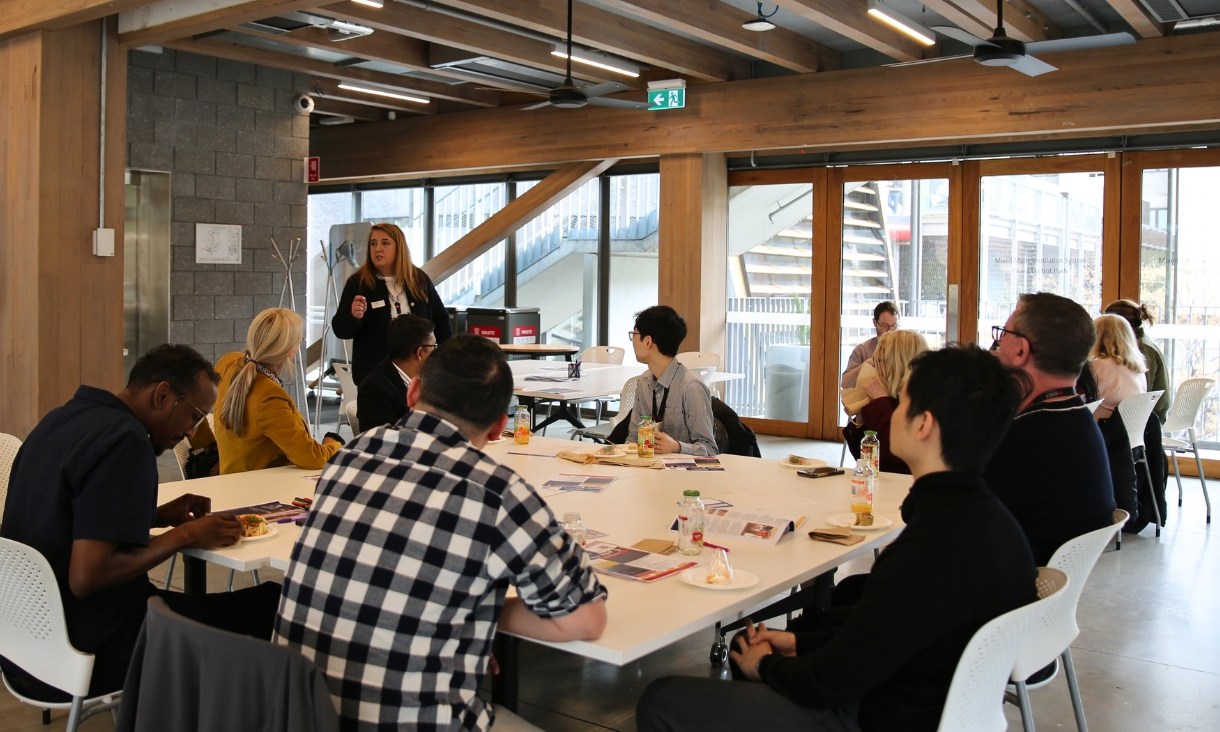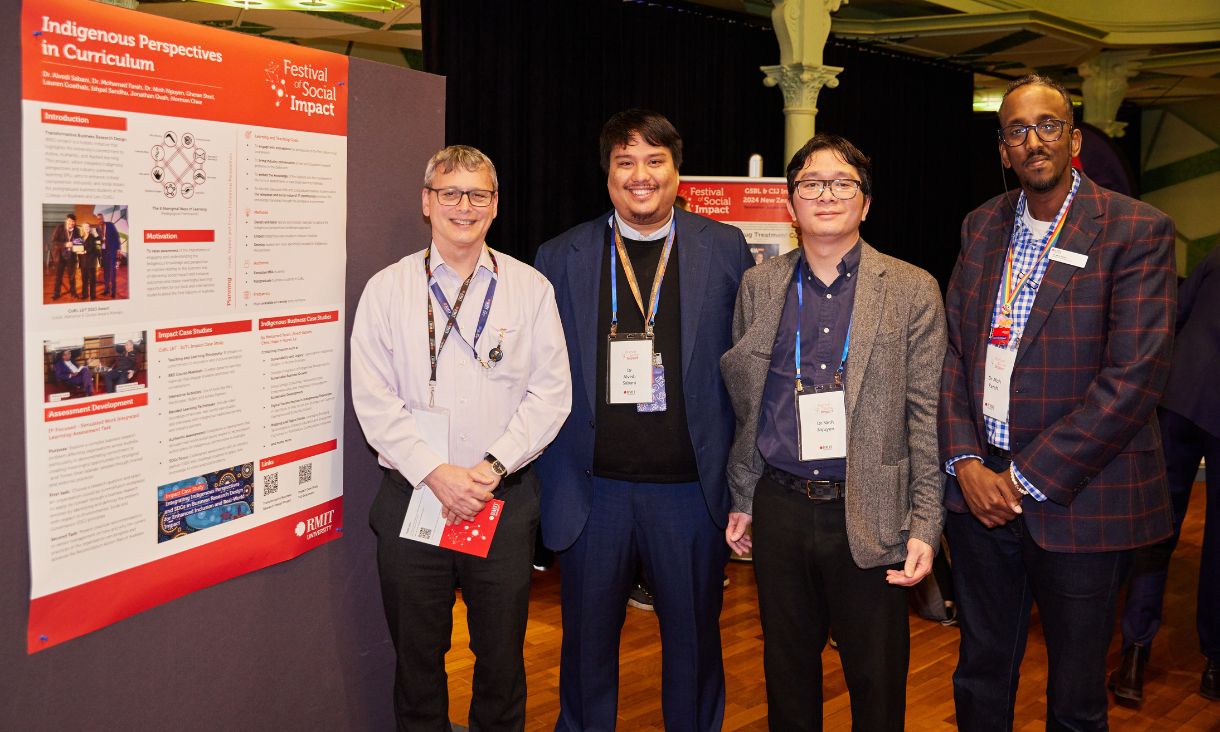In her role as Senior Officer at RMIT’s Centre for Academic Quality and Enhancement, Romy Kelly works with a team to read and evaluate program review submissions. At the time of writing this article, they read over 262 submissions in 2022 to date – which, for context, required the team to sit on 58 hours’ worth of program review panels and read over one million words of written submissions.
Throughout this process, they noticed that one of the most frequently used words was “pedagogy”. Given the ubiquity of its usage, the fledgling etymologist in Romy did a bit of digging into the word pedagogy and whether it’s the best term for describing the educational theories and practices in use at universities in 2022. This led her to wonder if perhaps, for example, andragogy and heutagogy better describe the work of learning and teaching at universities.
In this article, an etymological lens is used to define pedagogy, andragogy and heutagogy and describe how they are used at universities. The takeaway of this article is to reflect on your own approaches to teaching and learning, and consider which term best represents your practice.
What is pedagogy and is it the best term to describe learning and teaching at universities?
Pedagogy comes from the Greek word pais (παῖς). The prefix ped means ‘boy’ or ‘child’. A pedagogue in ancient Greece was a slave or attendant who would lead children to their place of learning. A derivative form of the prefix ped is pedia referring to upbringing, education or learning. This element can be found in the word encyclopedia, meaning ‘circles of knowledge’.
The prefix also appears in the late Latin word pedant, from the French pédant and Italian pedante, and translates to ‘teacher’ or ‘schoolmaster’. The term now refers to one who over-emphasises minor details or points of learning as opposed to the bigger picture. Merriam Webster says a pedant ‘annoys other people’ with their correction of minor errors. The suffix of pedagogy in ancient Greek, agogos (ἀγωγός), means ‘leader of’. From this perspective, we find ourselves using pedagogy to refer to the leading or teaching of children.
What pedagogy might look like in practice
In many circles pedagogy is synonymous with teaching, though we now come to understand it as a specific style of teaching:
- exclusively synchronous where learners and teachers are in the space place at the same time in order for the learning and teaching to take place.
- with information delivered via one-way communication e.g.: slide decks, presentations, didactic mode, etc.
- where the teacher is the holder of all knowledge and answers questions put to them by students.
- where students are tested on their recall and understanding of facts and concepts.
What is andragogy and is it a more suitable term for learning and teaching at universities?
The next term is ‘andragogy’: andra from the Greek for ‘man’. Andragogy was originally used in 1833 by German educator Alexander Knapp when describing adult education in the context of Plato’s teaching. It was later championed by American Malcolm Knowles in the 1970s. Knowles holds that andragogy applies to all forms of adult learning and is based on the principle that our students possess maturity and autonomy in their learning and have the motivation/desire to enhance their understanding, performance or self-esteem. According to this approach, teachers function to facilitate learners’ capabilities by providing resources and advice in a collaborative, enabling fashion.
What andragogy might look like in practice
With andragogy approach, learning is self-directed and the responsibility of the student. The student perspective and voice are valued where:
- students’ needs and capacities are gauged by the teacher who adjusts course design and delivery accordingly.
- lessons are offered synchronously (face-to-face) and asynchronously (online, digital, pre-recorded) enabling greater student control over their learning.
- assessments are formative and summative and emphasises reflective practice.
- feedback is actively sought (such as through Course Experience Surveys, Student Staff Consultative Committees) and leads directly to change and improvement.
What is heutagogy? Could it be the future of learning and teaching at universities?
The concept heutagogy is the most recent (and most difficult to pronounce). Heutagogy – of Greek origin meaning ‘to find’ or ‘to discover’ – was coined in 2000 by Hase and Kenyon in their development of a learner-led theory that makes a distinction between independent and formal teaching. At its core, heutagogy is the practice and management of self-determined learning. Responsibility, capability and capacity of the learner are essential to heutagogy. This approach subserviates teacher-centred learning down to experience and reflection to add weight and texture to the idea of ‘flexible learning’. Hase and Kenyon say andragogy and heutagogy are increasingly relevant as we lean into the world of Education 3.0 where technology is ubiquitous, the timetable has vanished, and students have total control over the choice of time, place and content of their learning.
What heutagogy might look like in practice
Heutagogy is an extension of andragogy: It addresses ‘soft-skill’ acquisition, resilience, reflective practice and real-world, workplace readiness as:
- learning is self-paced with all synchronous learning activities, resources and open chat channels available asynchronously/online for students to access on demand.
- materials are interactive, enabling students to learn not only by experience (e.g. simulations, walk-throughs, workshops, practicals, studios) but also by creating, building and prototyping (e.g. learner-generated content, social media engagement, modelling).
- it presents peer review activities that create opportunities for students to support, critique and teach each other.
- it shifts away from final timed assessments or exams towards authentic problem-solving challenges (also part of andragogy), effectively assessing students’ engagement with course content as a whole and the process of learning throughout the semester.
Reflecting on your own approaches to teaching and learning
Pedagogy, andragogy, and heutagogy provide us with three distinct ways of seeing our roles in the context of learning and teaching and what this means for universities as institutions and teachers as individuals.
While we might continue to use pedagogy generically to describe the approaches to learning and teaching at universities, a more critical lens is needed to more accurately define what we do in this space. Do andragogy and heutagogy accurately reflect the aspirations of higher education learning and teaching in 2022? If so, adopting these approaches will have implications for the way universities see their role in providing meaningful educational experiences. Perhaps it’s past bedtime for pedagogy.
This leaves universities and educators with the following questions to consider:
- Which of the learning and teaching approaches does the design of my program speak to? Which approach are we most comfortable with?
- How might we apply the principles of andragogy and heutogogy in our regular interactions with students, both in class and in the extra-curricular context?
- Are our students and colleagues ready for andragogy and heutogogy? What challenges do they present? How might we best manage expectations?
Discuss your answers with your friends, colleagues, and mentors.
Here are resources to guide your reflection and for further comparison and contrast between the concept's pedagogy, andragogy, and heutagogy check out the great diagrams and tables in these linked articles.
Story by: Romy Kelly, Senior Officer, Centre for Academic Quality and Enhancement.






